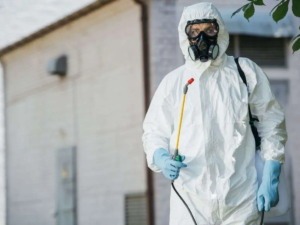Link Juice refers to the amount of page rank passed from one webpage to another through backlinks. It can be improved by obtaining high-quality links from authoritative sources, ensuring that the site’s content is topically relevant and aligned with user intent, and implementing an effective internal linking strategy.
When a high-authority website links to your site page, itvouchs for its credibility and relevance. This increases the page’s authority and boosts its ranking in SERPs. This is known as link juice. It is also possible for your pages to accumulate equity within your own domain through internal linking and other SEO techniques. The most important factor in determining link juice is the quality of the source. A link from a low-authority site is less likely to pass value, so you should focus on building links from sites with a high domain authority.

There are many ways to build your link juice, including guest blogging, participating in relevant online communities, and using strategic anchor text. Another way to increase your link juice is by creating high-quality content that is useful and informative. This will encourage other websites to link back to your site, which will increase your search engine visibility and ranking.
It is also a good idea to regularly audit your backlinks and remove any spammy or irrelevant links. This will improve your website’s health and help you avoid penalties from Google.
To maximize your link juice, you should use relevant keywords in your content. Using keyword-rich phrases in your title tags and meta descriptions will help search engines identify the topic of your page and determine its relevance to users. You should also use the target keyword in your URLs to help search engines understand what your page is about.
Another important factor in determining link juice is the number of links on a page. Having too many links can lower your site’s ranking. However, it is also important to balance the number of external and internal links on your website.
A good way to increase your link juice is by creating valuable content that attracts links naturally. This includes providing unique insights and solutions to problems. It is also helpful to create a network of links by reaching out to other websites and blogs in your industry. Other strategies for increasing your link juice include guest posting and content partnerships.
Links from Relevant Sites
Link Juice is one of the most important factors that determines a website’s ranking in search engine results pages (SERPs). By building high-quality, relevant backlinks and optimizing internal linking, businesses can increase their overall authority and relevance. This will lead to higher rankings in SERPs and more organic traffic. However, it’s important to note that Link Juice isn’t a permanent ranking factor – Google’s algorithms are always changing and evolving. While there are many different strategies for generating and utilizing Link Juice, some of the most effective tactics include creating shareable content, engaging in guest blogging, and participating in active community engagement.
There are several factors that influence the amount of Link Juice that a page passes on, including the number of links on the page, the quality of the linking sites, and the topical relevancy of the content. Generally, links from sites with high domain authority are more valuable than those from low-authority websites. The location of the links on the page is also a factor; links that appear closer to the top of the content are more likely to pass more equity than those that appear further down.
The anchor text of the link is another significant factor. It’s important that the anchor text is descriptive and relevant to the page’s content. Additionally, the use of keywords in the anchor text can help to improve the search engine visibility of the page.
Lastly, the quality of the linking site is a key factor in the amount of Link Juice that a webpage passes on. A reputable, authoritative site is more likely to be considered trustworthy and a good source of information. Therefore, it’s important that business and website owners link to reputable sites to receive the most benefit from their efforts.
Another important consideration when it comes to Link Juice is the amount of time a website has been online. In general, older websites have more Link Juice than newer ones. However, there are ways to improve the amount of link juice a page receives by updating its content and making sure that all links are pointing to the most current version of the page.
Links from Sites with High PageRank
When it comes to Link Juice, the more quality links you have, the higher your site will rank. High-quality backlinks can be obtained by writing and sharing valuable content, building relationships with other webmasters, and participating in social media marketing. Some of these methods take more time and effort than others, but they are all worth it in the end.
Aside from the number and quality of your backlinks, the location and type of links you have also affects your Link Juice. Links from authoritative websites and from pages within the same domain are more valuable than those from low-authority sites or from pages within different domains. Additionally, a link that is placed at the top of a page passes more juice than one that is buried in the footer.
Another factor that affects link juice is the relevance of the referring page. For example, if your site focuses on health and fitness, a link from a fitness blog will pass more juice than one from a CRM website. Additionally, the topical relevance of the linking page is important.
Many SEOs practice link sculpting, which is the process of passing more Link Juice to specific pages on a website. However, this is a dangerous practice that can hurt your search engine optimization. For instance, if you have a large number of nofollow links on your home page, this will reduce the overall PageRank of your site. In addition, using nofollow links on internal pages can also decrease the amount of Link Juice they pass.
To maximize your Link Juice, you should focus on obtaining high-quality backlinks from relevant sources and creating a well-organized internal linking structure. In addition, you should avoid duplicate pages on your website. Duplicate pages are not only harmful to your ranking, but they can also be difficult for users to navigate. Fortunately, there are a few ways to prevent duplicate content from affecting your SEO, including using a tool like LinkStorm to find duplicate URLs and redirecting them to the preferred version of the page. Additionally, you should refresh your page content regularly to keep it up-to-date and make it more linkable.
Links from Sites with Relevant Anchor Text
A link that contains a keyword in its anchor text can pass on some of its value to the page it links to. This is why it’s important to use the right keywords when creating your own links and linking out. For example, using “SEO” as an anchor text could give your link a boost because it’s a common search term that’s relevant to what you’re trying to accomplish.
The location of a link also influences its effectiveness. For example, a link located on the sidebar is more likely to receive more link juice than one buried in the footer of a website. The type of link also matters. A follow link passes more equity than a nofollow link, which is why it’s important to include as many dofollow links in your site as possible.
While there are many factors that influence a webpage’s ability to rank in SERPs, a page’s PageRank is perhaps the most influential. A web page with a high PageRank is more likely to outrank a competitor’s page in the same niche because it has more authoritative links.
In addition to its own authority, a page’s PageRank is affected by the number of other pages it links to. The more pages a page links to, the less PageRank it passes on to each of those linked pages. This is known as PageRank Sculpting.
The most valuable link juice comes from pages that have a strong connection to each other. For example, a blog article about software may benefit from a link to a software company’s homepage because both pages discuss the same topic and audience.
Many marketers and website owners overlook pools of link juice that already exist on their sites. By tapping into these reservoirs and distributing it to pages that need it, they can improve their search engine rankings and increase the visibility of their brand. To do this, they need to identify and target the most authoritative pages on their website. By using internal linking and targeting keywords and LSI keywords, they can create links to these pages.

